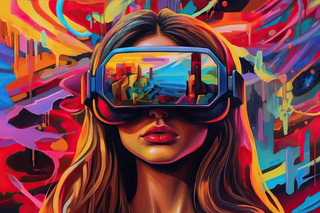-
VR Headsets: Shoppers use VR headsets to immerse themselves in a virtual environment. These headsets can range from standalone devices like the Oculus Quest to high-end PC-powered headsets like the HTC Vive or Oculus Rift.
-
Virtual Stores: Within the VR environment, users can access virtual stores that replicate real-world retail spaces or create entirely new and imaginative environments. These stores can be designed to resemble traditional brick-and-mortar stores or take on entirely new forms limited only by the imagination of designers.
-
Product Display: Products are displayed within the virtual environment, often in a way that mimics how they would be presented in physical stores. Users can interact with these products by picking them up, examining them closely, and sometimes even trying them out virtually (for example, trying on virtual clothes or testing out virtual furniture in a simulated room).
-
Customization and Personalisation: VR shopping experiences can offer customization and personalisation options that go beyond what's possible in physical stores. For example, users might be able to customize the color, size, or features of a product in real-time, seeing the changes reflected instantly in the virtual environment.
-
Social Interaction: Some VR shopping experiences incorporate social features, allowing users to shop with friends or interact with virtual sales assistants. This can enhance the sense of immersion and make the shopping experience more engaging and enjoyable.
-
Payment and Checkout: Once users have made their selections, they can proceed to checkout within the VR environment. Payment methods can vary, but they typically involve integrating existing e-commerce platforms or payment gateways into the VR experience.
-
Delivery and Fulfillment: After completing their purchase, users receive their products through traditional delivery methods. Alternatively, in some cases, digital goods or services can be instantly accessed within the VR environment.
VR shopping offers several potential benefits, including:
- Enhanced Immersion: VR shopping provides a more immersive and engaging experience compared to traditional online shopping, allowing users to feel like they're physically present in the store.
- Expanded Product Visualisation: VR enables users to visualise products in three dimensions, providing a more accurate representation compared to static images or videos.
- Reduced Need for Physical Space: For retailers, VR shopping can reduce the need for physical retail space, potentially leading to cost savings.
- Convenience and Accessibility: VR shopping can be more convenient for consumers, allowing them to browse and purchase products from the comfort of their own homes.
- Opportunities for Innovation: VR opens up new possibilities for innovative shopping experiences, such as virtual fashion shows, interactive product demonstrations, or collaborative shopping experiences.
However, there are also challenges and limitations to consider, including the cost and accessibility of VR hardware, concerns about privacy and security, and the need to overcome technical hurdles to create seamless and intuitive VR experiences.
Overall, VR shopping has the potential to revolutionise the way we shop, offering a unique blend of convenience, immersion, and interactivity that traditional online and offline shopping experiences cannot match.

 Add a new comment
Add a new comment





















